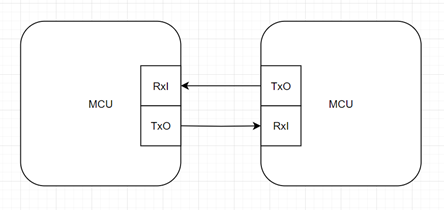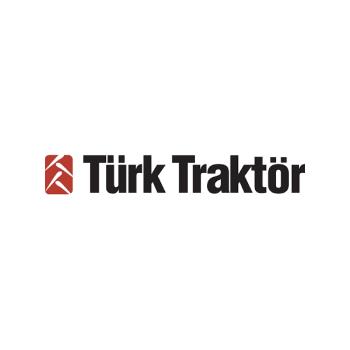What is UART (Universal Asynchronous Receiver-Transmitter)? How Does It Work? Automotive Applications
The automotive industry continues to experience a radical transformation thanks to the rapid integration of digital technologies. Vehicles contain numerous electronic control units (ECUs) and sensors to provide safety, comfort and technological services to drivers and passengers. In order for these complex systems to work in harmony and effectively, it is vital that the communication between them is reliable, fast and uninterrupted.
In-vehicle communication protocols vary according to different applications and requirements. CAN (Controller Area Network) is widely used in critical safety applications such as engine control, braking systems and airbags, which require high speed and reliability. LIN (Local Interconnect Network) is preferred for secondary systems such as climate control, seat settings and lighting, which require lower speed and cost. Other protocols such as FlexRay and MOST have been developed for applications that require high bandwidth and fault tolerance.
The UART (Universal Asynchronous Receiver-Transmitter) protocol plays an important role in the automotive industry. Thanks to its simplicity and cost-effectiveness, it offers an ideal solution for data communication, especially between sensors and auxiliary devices. UART, a serial communication protocol, enables data exchange between two electronic devices.
What is UART?
UART (Universal Asynchronous Receiver-Transmitter) is a serial communication protocol that facilitates the exchange of data between two electronic devices. Unlike other communication protocols such as CAN (Controller Area Network) or LIN (Local Interconnect Network), UART is asynchronous, meaning that data transmission is not based on a clock signal shared between devices. Instead, UART transmits data one bit at a time over a communication channel, making it simpler and more cost-effective, especially for applications where high-speed or complex communication is not required.
How does the UART work?
At its core, the UART converts parallel data from the transmitting device into a serial data stream, which is then sent bit by bit over a communication line. On the receiving side, the UART reverses this process by converting the serial data stream back into parallel data that the device can process.
Communicating devices are divided into two as Master and Slave. These devices communicate with two cables. One of these cables is called Tx, the line transmitting the data, and the other is called Rx, the line receiving the data. The Tx line of the Master device must be connected to the Rx line of the Slave device. Likewise, the Tx line of the Slave device is connected to the Rx line of the Master device. Data flow is provided in this way. For example, we can define the computer as the Master device. Data can be sent and data communication can be achieved through an intermediate cable connected to the processor in the hardware to be communicated with the computer.
Basic Components of UART Communication:
Start Bit: UART communication starts with a start bit that signals the beginning of data transmission.
Data Frame: The actual data transmitted is usually framed with 5 to 9 bits, depending on the configuration.
Parity Bit (Optional): A parity bit can be added for basic error detection.
Stop Bit: Transmission is terminated with one or more stop bits to indicate the end of the data frame. Since the UART is asynchronous, the transmitter and receiver must agree on certain parameters such as baud rate (transmission rate), data length and stop bit configuration to ensure successful communication. This simplicity makes UART an ideal solution for applications where data is transmitted over short distances, such as subsystems of a vehicle.
As an example packet structure; #A,01,92! Let '#' be the start bit in this packet. When a packet is received from the master device, the slave device will process packets starting with '#' and will not process other meaningless packets. 'A' can specify the type of command. For example, it can be used to identify packets related to LED on and off. '01' can be set as the bit that carries the information about which LED to turn on. '92' can be set as the bit that indicates the CRC value of the packet. '!' represents the last bit of the packet. In this way, various packets can be created according to the need.
UART Applications in Automotive Systems:
The UART's simple design and low cost make it an attractive choice for a variety of automotive applications. Some common uses include:
Sensor Data Communication: Many sensors in modern vehicles, such as temperature or pressure sensors, use UART to transmit data to central control units.
Diagnostics and Maintenance: UART interfaces are often used for communication between on-board diagnostic (OBD) systems and external diagnostic tools, allowing technicians to retrieve fault codes or vehicle performance data.
Peripheral Communication: UART is widely used to interface with peripherals such as displays, GPS modules and entertainment systems where real-time data transmission is required but does not require high speed. UART and Other Automotive Communication Protocols.
Other Automotive Communication Protocols
In the world of automotive communications, a variety of protocols exist, each suitable for different tasks:
CAN (Controller Area Network): CAN is one of the most popular protocols for in-vehicle communication, especially for critical systems such as engine control, braking and airbag deployment. It offers high speed and reliability, making it ideal for real-time applications that require fault tolerance.
LIN (Local Interconnect Network): LIN is a cost-effective, slower protocol used for non-critical functions such as climate control, window operations and seat adjustments. While LIN is less robust than CAN, it is sufficient for tasks that do not require high-speed communication.
FlexRay: This protocol is used in applications that require both high data rates and fault tolerance, such as advanced driver assistance systems (ADAS) and autonomous vehicle control.
MOST (Media Oriented System Transport): MOST is designed for high-bandwidth applications such as audio, video and infotainment systems in vehicles.
UART Selection in Automotive Application
While UART is not the most advanced protocol, it has distinct advantages in certain scenarios, especially for systems where simplicity, low cost and ease of implementation are important. The simplicity of UART reduces both hardware and software cost. For systems that do not require high data transfer rates, such as sensor interfacing or diagnostics, UART offers an efficient solution. UART is well suited for direct communication between two devices without the need for complex networking or addressing mechanisms.
Conclusion
UART plays an important role in modern automotive communication systems, especially in applications where simplicity, cost-effectiveness and reliability are more critical than speed or complexity. From facilitating data exchange between sensors and control units to providing diagnostic communication for maintenance purposes, UART remains a fundamental protocol in the automotive industry. As Bestaş, UART communication protocol is used by our expert engineers in many areas from our instrument panels to DC-DC converters, from On-Board Charger to speed sensors.
As vehicles become increasingly complex and more sensors and ECUs are integrated into their systems, the need for various communication protocols such as UART will continue to grow.






